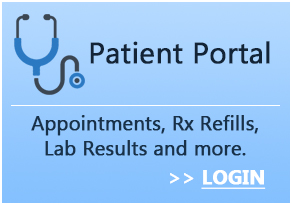
Congratulations! The arrival of your little bundle of joy is fast approaching, and with it comes the rollercoaster of emotions: excitement, anticipation, and maybe a touch of anxiety — especially if it’s you’re a first-time mama. It’s completely normal to have questions about labor and delivery.
Let the docs at Empire OBGYN ease your mind with the knowledge you need to feel empowered for the big day!
The Childbirth Process
Childbirth is a complex and amazing journey. First and foremost — remember that you’re built to do this! Knowing what to expect in the various stages of labor and delivery can help with any anxiety you may be feeling. There are three distinct stages:
Stage1: Early Labor & Active Labor
Early labor can be unpredictable, lasting for hours or even days. You might experience mild contractions, cramps, and cervical dilation. Some women don’t even know they’re in labor at this point. Now’s the time to take it easy, listen to your body, and do whatever you can to stay comfortable. If your water breaks or you notice significant bleeding, call your doctor ASAP.
Active Labor is when things intensify. Contractions become stronger, more frequent, and longer — think 40-60 seconds of contracting at a time. The cervix will continue to dilate (open) and efface (shorten and thin), and you’ll probably notice increased pelvic pressure or your water breaking. If you haven’t gotten in touch with your doctor yet, do that now! And head to the hospital or wherever you plan to deliver. Although it’s definitely “go” time, you still may have several more hours of labor ahead of you.
Stage 2: Delivery of the Baby
The part you’ve been waiting for! Baby is actively pushed through the birth canal with each contraction. Your doctor, midwife, or nurse will coach you. For some women, this stage is only a few minutes. But for many first-time moms, this stage can take upwards of 3 hours.
As long as your delivery is uncomplicated and baby is healthy, you’ll be able to hold him or her right away. The umbilical cord will be clamped and cut shortly after delivery, and if you had any tears or an episiotomy, those areas will be stitched.
Stage 3: Delivery of the Placenta
The work isn’t over! While the hardest part is behind you, you still have to deliver the placenta. This usually happens within 30-60 minutes after baby is delivered. You’ll continue to have mild contractions, and your doctor will probably ask you to push a couple more times to pass the placenta.
Mild contractions will continue even after this, and your healthcare providers may massage your abdomen to help your uterus contract and slow the bleeding.
Your Childbirth Options
There’s no “one-size-fits-all” when it comes to a delivery method. Discuss your preference and medical needs with your obstetrician at Empire OBGYN or your childbirth center to help you choose the best birthing plan for you.
- Vaginal Delivery. The classic and most common delivery method is where the baby exits through the birth canal. You can choose a natural, unmedicated birth, or explore pain management options like an epidural.
- Cesarean Section (C-Section). This is a surgical procedure performed when a vaginal delivery might pose risks to the mother and/or child. C-sections can also be planned in advance for certain medical conditions.
What to Pack in Your Hospital Bag
More often than not, you’ll be arriving at the hospital hours before baby arrives. And if history tells us anything, labor often kicks into higher gear late in the day. So you may be in for a long night. Therefore, it’s important to be prepared for your hospital stay with a well-stocked bag.
For Mom. Less is more! You’ll be able to use (and take home) a lot of goods from the hospital. But here are a few necessities:
Comfortable clothes — think loose-fitting pants and maternity dresses, maternity bras and nursing pads, toiletries, identification documents, insurance information, phone charger, entertainment (books or music), and comfortable slippers.
If you plan to breastfeed, you may consider bringing a breastfeeding pillow to make it more comfortable while you’re getting the hang of it. If you’re planning to pump, you can either bring your own or ask to rent one while you’re in the hospital.
For Baby. Truthfully, baby doesn’t need much, because the hospital will supply the essentials like diapers, wipes, formula (if using), swaddle blankets, hats, and a couple basic clothing items. You can bring along any special clothes or swaddles that you would like to use, and you may consider bringing a white noise machine.
But the most important thing? Baby’s car seat! Make sure you know how to properly use it (bring the manual if you need to)!
For Partner. Comfortable clothes, toiletries, snacks, entertainment. They’ll play an important role as your rockstar support system!
Additional Pro Tip: Check with your specific hospital for any additional packing recommendations. For example, some facilities have a photographer on-staff. You may want to pack special clothes for your first family photo!
What to Expect at the Hospital
- Upon arrival, a nurse (or possibly a medical resident) will monitor your contractions and the baby’s health to ensure everything is progressing smoothly. They will also check to see how far you’ve dilated.
- You’ll have an IV placed in case of needed medications (like if you are positive for Group B Strep and need penicillin).
- Pain management options will also be available if you choose to use them.
- Your support people, like your partner or birth coach, can be by your side throughout the process, offering encouragement and emotional support. Try to rest as much as possible!
- You may not see the doctor on-call until it’s close to delivery time. But don’t worry — your nurses will remain in very close contact with your doctor to keep them informed of your progress and any concerns. Your doctor will be there when needed!
Considering a Childbirth Center?
For some mothers-to-be, a childbirth center offers a more comfortable and home-y environment compared to a traditional hospital setting. Childbirth centers typically focus on natural childbirth and offer amenities like birthing tubs, showers, and low lighting to create a more relaxed atmosphere.
You can discuss this option with your obstetrician to see if it aligns with your labor plan and your medical needs.
Let’s Talk About Childbirth Anxiety
Anxiety is a perfectly normal emotion during childbirth. The unknown, the thought of pain, and the immense responsibility of caring for a newborn can all contribute to childbirth anxiety. Here are some top tips to manage it:
- Knowledge is Power. One of the factors that fuel childbirth anxiety is facing the unknown. Topple that down by arming yourself with knowledge. Familiarizing yourself with the labor and delivery process, different pain management options, and more, can help ease the anxiety you’re experiencing.
- Don’t Be Afraid to Talk to Your Doctor. Discussing your anxiety with your doctor can work wonders. They can answer any specific questions, address concerns, and can recommend relaxation techniques or support groups.
- Consider Prenatal Classes. Prenatal classes can equip you with breathing exercises and techniques to help manage pain and anxiety during labor and delivery. Collect all the valuable information so you can look forward to your birthing experience with confidence and positivity!
Welcoming a New Life into the World with Empire OBGYN
At Empire OBGYN, we believe in a positive and empowering childbirth experience for every mother — whether seasoned or brand new.
We are equipped with the latest knowledge and equipment along with a dedicated team of doctors and nurses. And we’re here to support you every step of the way — from prenatal care to delivery and beyond. We’re honored to be a part of this precious transition in life and support you on your journey to motherhood!
Got questions or concerns? Please don’t hesitate to call or schedule an appointment!





